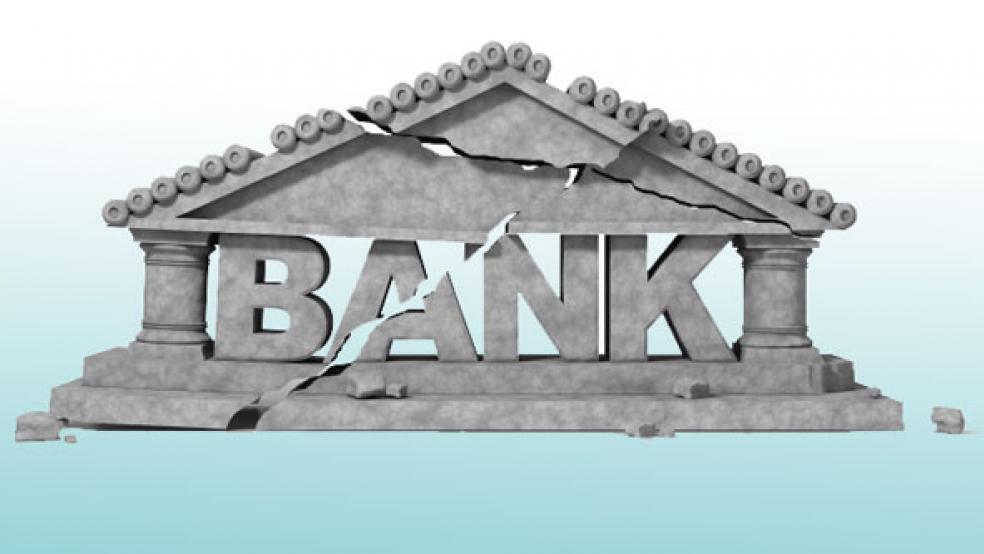After the financial debacle that caused a near economic depression in the U.S. and elsewhere, Dodd-Frank, the financial reform bill, promised the American people that taxpayer money would never again be used to bail out troubled banks.
Much of the burden for fulfilling that promise fell on the Federal Deposit Insurance Corporation. A new proposal released today shows just how difficult a task that is.
The agency proposed a strategy to deal with the failure of a “systemically important financial institution” (SIFI) while simultaneously protecting the rest of the economy from collateral damage.
Related: Why Jack Lew Is Kidding Himself About Too Big to Fail
The problem is, according to at least two FDIC board members, the proposal might wind up creating unfair competitive advantages for large firms vis-à-vis their smaller brethren, and in the end, might not protect the taxpayer anyway.
FDIC Vice Chairman Thomas M. Hoenig released a statement noting that the agency faces “a series of obstacles as it develops a resolution plan should a SIFI fail and not be resolvable under bankruptcy.”
FDIC Director Jeremiah O. Norton, while praising the agency staff’s work on the proposed rule, expressed similar concerns, “there are a number of key issues that require further consideration and analysis.”
The Dodd-Frank Act mandated that for the most part the resolution of insolvent financial institutions should take place through normal bankruptcy procedures. Shareholders, creditors, and in some cases, depositors take the hit – not the Treasury Department. But the drafters of the law recognized that there are some financial institutions in the U.S. that are simply so large that allowing them to go bankrupt in the typical sense could cause severe and cascading structural harm to the U.S. economy.
Related: Break Up Big Banks? Here's A Better Solution
For that reason, lawmakers gave the FDIC what’s called “Orderly Liquidation Authority” over SIFIs, meaning that the agency can put a large financial firm into receivership to prevent an uncontrolled collapse.
Today’s proposal outlined what the agency calls a “Single Point of Entry” method of resolving a failed megabank.
The FDIC would create a “bridge company” that would take the place of the holding company and would assume control over all of its subsidiaries and affiliates, which would continue to operate, preventing widespread market disruptions. The bridge company would be capitalized from the assets of the failing institution or, if available capital was insufficient, from loans from the private sector or the government.
Because the bridge company would not be insolvent, most counterparties to the bank in derivatives transactions would not have the right to close out their contracts, theoretically preventing the “fire sale” of assets.
Related: 5 Years After The Crisis: What Banks Haven't Learned
But Hoenig and Norton identified several possible problems with the agency’s proposal.
First, by assuring the subsidiaries of a SIFI will continue to operate in the event of the holding company’s failure, the FDIC may be handing those subsidiaries a competitive advantage over competitors not affiliated with a SIFI, Hoenig pointed out.
“In times of financial stress, the knowledge that operating units will be provided funding to meet liquidity demands could serve to encourage corporate treasurers and others to place their funds with SIFIs’ operating subsidiaries over other financial firms for whom such assurances are unavailable.”
Another issue is how to determine whether the amount of capital and debt held by the bridge company is sufficient. If it is not, wrote Norton, “Without sufficient intra-company debt to recapitalize a failed subsidiary, the desired orderliness…might not be achievable.”
Related: Volcker Rule Lets Bank Ceos “Off The Hook”
A third problem is that, while the proposal clearly intends to insulate the Treasury from the costs of resolving a SIFI, it isn’t clear that the agency could actually do so in practice.
“[G]iven the practice in the U.S. and elsewhere, and since [the proposal] can be implemented only if the SIFI's failure would have systemic consequences,” Hoenig wrote, “it is likely that the government would step in to assure an operating subsidiary does not fail.”
The result, he wrote, “represents significant public support for these institutions.”
Advocates of small financial institutions were dubious about the proposal, and said that they didn’t believe that it would prevent future government bailouts of large financial institutions.
“The single point of entry strategy doesn’t eliminate too big to fail,” said Chris Cole, senior vice president and senior regulatory counsel with the Independent Community Bankers of America.
“You are still going to have institutions that are too big to fail,” he said. “What you’re eventually going to have to do is break them up.”
Follow Rob Garver on Twitter @rrgarver
Top Reads from The Fiscal Times:





